MAKE WORK
A TWO-WEEK CREATIVE EXPERIENCE
NOVEMBER 5 – 19, 2020
A midwife once told me she liked the work because there’s no room for bullshit when someone is giving birth. I too crave bullshit-free work. I always instinctively knew the world of suits and pencil skirts was not for me. When I was 21, at a job interview in a large serious place of business I asked the interviewer – my prospective boss – if he liked his job. After furrowing his brow for a few seconds he said, “I wasn’t raised to think of work as something you enjoy, really. You just go to work and do your job.” When I got an email informing me I’d made it through to the next round of interview, I cried. It was shortly after that I put away my interview suit and went to work in a record shop.
When I was seven years old I sat next to a classmate who always had her stationery arranged just so and seemed perennially delighted to do her schoolwork. One day she let me in on her secret: “I pretend I’m working in a post office.” That memory came back to me when I was selling records in my early twenties. I worked weekends and had time off mid-week. My friends would be at their office jobs so my usual routine was to take my Moleskine notebook and go for a walk along the river, stopping off at a pub for lunch. I can’t remember exactly what I’d write but even then I think I knew I was essentially playing pretend. I’d journal about business ideas or topics I was researching but I always wished it felt more concrete and real. It was all so inconsequential. I longed for something to get my teeth into: a business to start, a project to complete, some tangible output I could present to the world.
NOTHING REMARKABLE
A few years into my business I was playing pretend all over again. On days where I could afford the time away from designing websites for my clients I would go to the pub for lunch and take my laptop with me to work on a course I was building about online marketing. I wrote a complete sales funnel for it and built out a lot of the course materials but I think I always knew deep down I was never going to actually do anything with it. It was little more than my effort at rehashing the courses I’d bought from the internet marketing “gurus.” There was nothing authentic about it. Nothing remarkable about it. It was just my latest attempt to get away from web design.
That phase went on for years. I liked the process of learning, researching and creating new things to market online but the products and services I was pushing myself to create didn’t feel quite right. The final straw was the book.
Once the web design business was on firm ground everyone was telling me I should have a book to mark me out as an “expert” and stand apart from the competition. I was overthinking it, they said, I just needed to get it done. I started putting together ideas. I took a couple of weeks off to go to Donegal and start writing. Days went by without me squeezing out more than a few words. I told myself to put my head down and just do it but there was no way I could push through. Instead, I had a quiet breakdown of sorts.
Because my business had gained some traction at that point, the world was treating me like I had things figured out and was on my way, but every day I woke up thinking, “I don’t know what the fuck I’m doing here.” Eventually I downed tools and told myself, “I’m not writing a book until I have something to say that’s my own.”
MORE THAN JUST SURVIVAL
I didn’t have a great birth experience first time round. Strange as it may seem, it took me a long time to realise that. In the immediate aftermath I felt lucky. It could have been so much worse.
In the early weeks I was chatting with another new mother from my antenatal group when I remarked that, while the birth could have been better, my daughter was well and I was ok and that was the most important thing. “Well, maybe,” she replied. “But I think we should be aiming for more than just survival… I think that’s a reasonable expectation.”
By the time I was pregnant with my second child I was clear my priority was continuity of care. I wanted the same midwives looking after me throughout my pregnancy all the way to the birth. I wanted to labour in the presence of a midwife I knew and who knew me. I didn’t want our first meeting to be at the moment of reckoning, like last time.
I’m fortunate to live in an area where that’s an option on the NHS, in theory at least. I was assigned to a team of six midwives, three of whom I would meet at my various appointments during the pregnancy. The hope is that when you go into labour one of those three will be available to attend you.
As it happened, over the course of the nine months there was one particular midwife I saw more than any of the others. On one home visit, the day after Christmas, as well as doing the scheduled blood test, Olivia took the time to walk me through the notes from the birth of my daughter. I had gotten a copy to try to make sense of what had actually happened but having read them, I still didn’t understand why certain decisions were made and why doctors had intervened.
HOW WE BIRTH IS HOW WE LIVE
When my daughter was around five months old I spoke to a new client for the first time. Angela Fitzgerald is a former midwife and, I’ve come to learn, always a source of wisdom around things birth related. As she described her work she said, almost in passing, “How we birth is how we live.” It felt like a gut punch. I wrote it down and quickly recomposed myself to finish the rest of our session. After the call I closed my laptop and stared at those words on the page: “How we birth is how we live.” What did that mean for me?
I was still at the very beginning of acknowledging that my birth experience hadn’t been good. Thinking about it in the context of Angela’s statement I realised how much I had ignored my own instincts as the whole thing unfolded. I complied. I trusted their assessment – based on numbers and targets – over my own sense of myself and what my body was telling me. I strained. I pushed on command until eventually they pulled the baby out with forceps.
YOU’VE ALREADY WRITTEN IT
After I gave up on the idea of writing a book, I went about my writing the way I always had. I produced short pieces and mini essays, publishing them mostly in the form of emails and Facebook posts. Around the same time I pretty much totally stopped reading business and personal development books, something I’d obsessively collected in the past. I began to read for curiosity and pleasure rather than productivity or improvement.
I remember being gripped by Seamus Deane’s Reading in the Dark. Deane is a poet from Derry and this book was his first novel. It isn’t structured like a typical novel. The chapters are very short, some only a couple of pages long. I remember thinking that if and when I got around to writing a book some day I’d like to try to steal that structure. Long form pieces are always difficult for me but the idea of writing lots of micro chapters seemed doable.
As I developed my work I instinctively began publishing regular writing series online. I’d choose a theme I was pre-occupied with and write a short piece related to it every day for a month, publishing them live online as I went.

After a few years I was aware of the fact that through these series I had amassed a substantial body of work. After one particular series wrapped up a friend said to me, “There’s your book! You’ve already written it!”
By the time I came around to the idea that some of these series might be fit to print and bind in a book I was three months pregnant with baby number two. After a somewhat fraught and exhausting first trimester I was hoping for a spurt of energy in the second, so the timing seemed perfect for the book project.
I was under no illusions that I was putting out a bestseller – the plan was a small run we’d print ourselves – but I was clear I wanted to create a book that was lovingly made, well thought-through, and a beautiful object in your hand. If it was going to be the best quality it could be I’d need the help of an editor. I reached out to Robin Black, who I knew to be the kind of editor who would give as much of a shit as I did.
Robin and I first became acquainted because he somehow ended up on my mailing list and we’d exchanged emails over the years. I think that’s why it didn’t occur to me to even consider the possibility of seeing what other editors might do or charge. He knows my work. He gets it. He shares my value of making decisions based on what best serves the work. Once Robin was on board I was able to finally take the first steps to get the book project underway.
FAILURE TO PROGRESS
A month before my due date, Olivia and another midwife spent a couple of hours with John and me talking through how things would go when I went into labour: what we needed to prepare, when we should call them, and what to do if I had the urge to push before a midwife had arrived. That “rapid birth scenario” was John’s main focus; he asked them to go over it twice. “If I have to deliver the baby, I want to be sure I know what I’m doing!” he said.
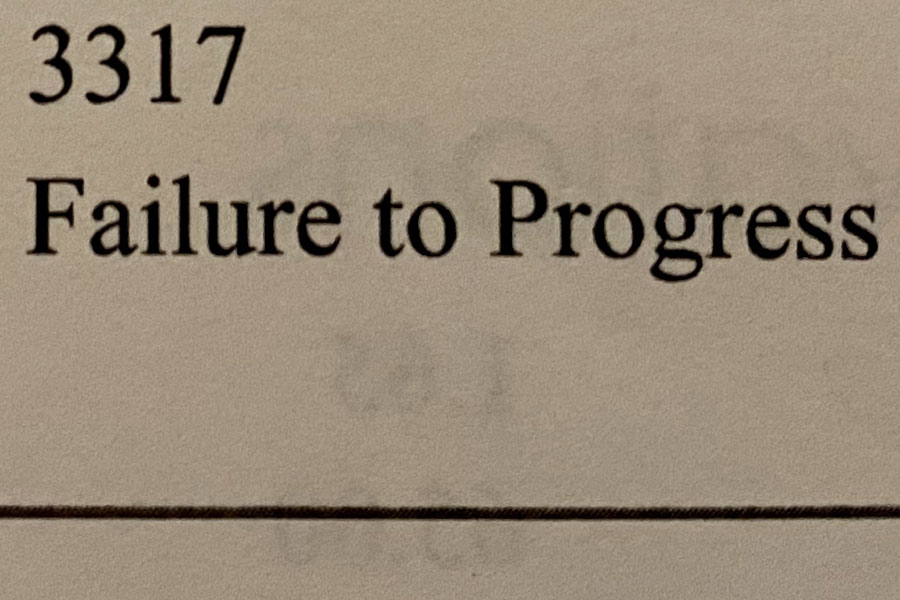
My concerns were different. “This ‘urge to push’ we’re talking about,” I said, “I don’t know what that feels like. I didn’t get to that point last time.” If you don’t move through labour and birth according to the timescale in the guidelines, doctors will encourage you to let them intervene. Unaware of these time limits, and reassured that neither I nor the baby were in distress, I had been confused as to why I was being rushed and told to push when I wasn’t yet feeling any impulse to. “Failure to progress” is what it said in my hospital notes.
MOMENT OF TRUTH
In these latter weeks of pregnancy, as well as preparing for the birth of our son, I had also been working through the final stages of the book. The very last thing I had to do was write some new material: intros for each series in the book and an overall introduction. I’d been putting it off for months. I’d schedule it in my calendar each week but it never happened. I kept moving it back and back. A couple of weeks into my third trimester, on a day when I was supposed to be working on something else, it all kicked into gear. Within a few days I had the material finished and ready to send to Robin.
As my due date was approaching, the book had been typeset, proofread, and was with the printers. I didn’t know which baby would arrive first, the book or the boy, but it was exciting to know they were both now fully cooked.
A week before my due date – and a few days before I was expecting the final proof from the printers – I got the first twinges. I took a bath and told John he should go to bed and get some sleep while he could. I laboured through the night, napping between contractions. I woke John around 5.30am. There was no hurry, I told him, but we should have my brother come and collect our daughter soon. Things moved fast from there.
Just before 7am I told John to page the midwives. (They still use a pager: what’s not to love about that?) This was the moment of truth. Whoever responded to that page would be the midwife by my side for the birth. This was the only thing I was worried about. At an appointment a week earlier I had asked Olivia if it was a possibility that I could go into labour and none of the midwives I knew be available to come. “Yeah, that is possible,” she said, before telling me a little about the team members I hadn’t met and assuring me I’d be in good hands whatever happened. I believed her, but I was still anxious about it.
A couple of minutes after John got off the phone to the pager service my mobile rang and he answered. As soon as I heard him say, “Oh, hi Olivia,” I let out a deep breath and a little voice inside said, “We’re good. This is all gonna be okay.”
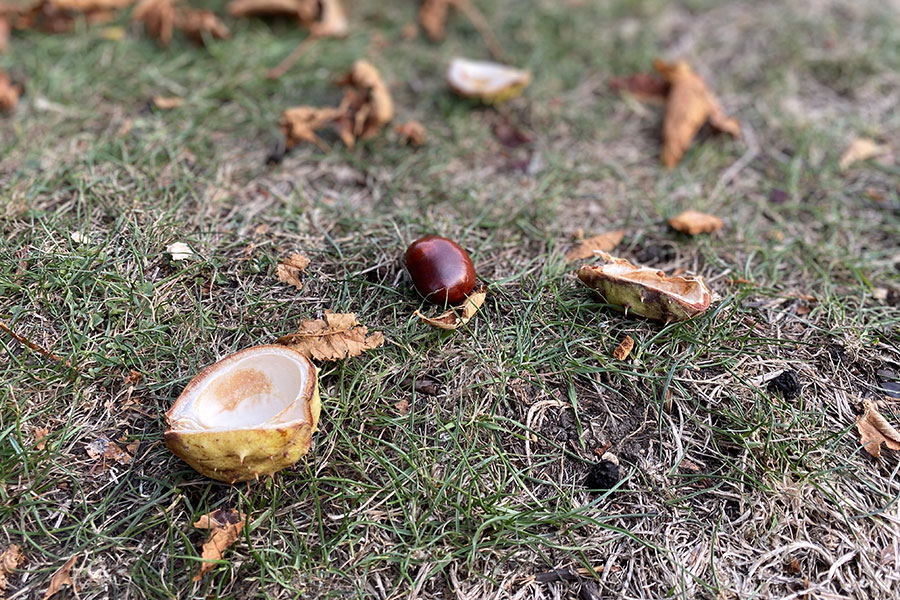
After Olivia arrived she mostly left us to it. An hour or so in, she came to speak to me just after a contraction. “It seems like things are getting more intense?” All I could do was nod my head. “We’re just gonna go with your body,” she said. “I’ve already called for the second midwife.” They need to have a second midwife present for the actual birth, so as the labour progresses they feel out when to call. I was surprised when she told me she’d called for her second. It seemed a bit soon to me. I was hoping I’d be done by lunchtime but it was still not yet 9am.
When Rhiannon, the second midwife, arrived I had reached the rhetorical questions phase. I was wandering around the room asking, “Who would do this?” “Whose idea was this?” Rhiannon took over the task of maintaining the notes and just 11 minutes after her arrival she wrote for the first time, “involuntary pushing noted.”
The unmistakeable and uncontrollable moment was here. Although I don’t know that I would describe it as an “urge to push.” It wasn’t so much that there was an urge; it was more that pushing was simply happening. Within around ten minutes there was pushing with every contraction and a few minutes later the baby was born. After fully expecting to be there until 1pm or so, the baby was born at 9.27am.
INVOLUNTARY PUSHING
Later in the day, after the midwives were gone, the baby was settled, and I’d had a sleep, I picked up the birth notes to read them. It’s fascinating to me to have such an intense experience and then be able to review time-stamped notes documenting the whole thing. I returned to the notes again and again, reading them a few more times in the days that followed. I kept coming back to the words “involuntary pushing.” I didn’t know what, but my brain was working on something. I wrote “INVOLUNTARY PUSHING” on my whiteboard.
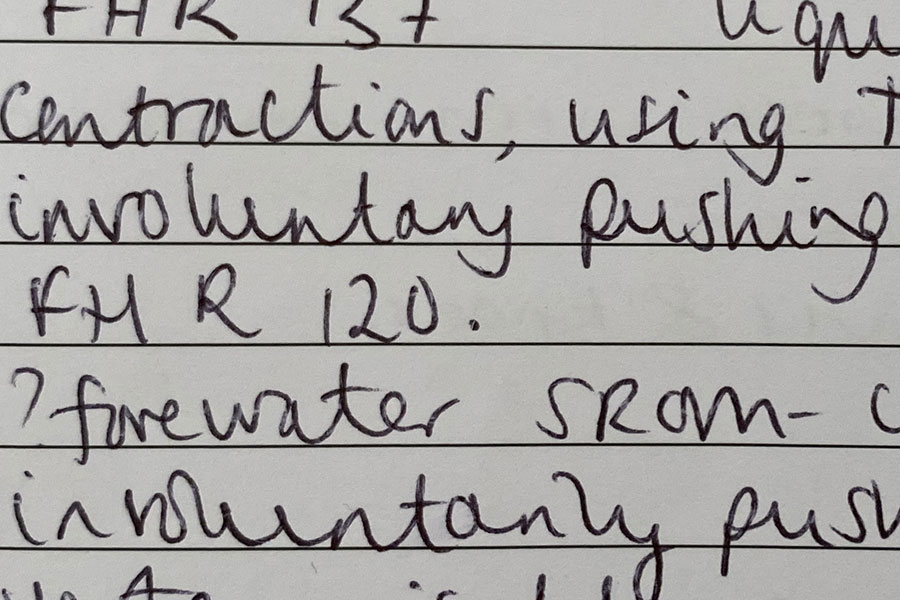
Involuntary. That’s how the book project felt to me. That’s how all my work projects feel and have felt since I started following the spark of aliveness and only doing work I actually care about. Everything I ever make has some involuntary pushing phase. Often I’m supposed to be working on something else but I get hijacked by a particular idea or curiosity that I have no choice but to follow. It can feel like a physical compulsion. I can’t not do it.
WORK IS NOT WAR. WORK IS BIRTH.
I’d spent the past few years circling this realisation that human creativity and production are best understood through the lens of birth. We’re obsessed with productivity and getting things done but we never stop to consider how humans create and produce at the most primal level.
Many of us don’t realise that our current notions of work are based on a war paradigm. Most business strategy has its roots in military strategy. The imprint of militaristic language, structures and thinking are all around.
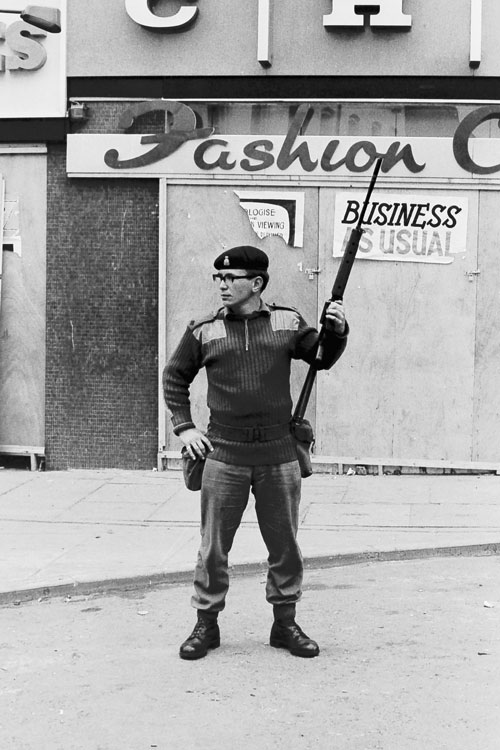
I’ve never read The Art of War nor any of the business-focused derivatives of it. Having grown up in Northern Ireland during the Troubles, the war metaphors of the business world and the compete-dominate-win mindset never sat well with me. My eventual rejection of it all left a void in terms of how exactly I should think about my work. I instinctively leaned into thinking about it through a more artistic lens, but as I came to experience and understand birth in all its nuanced, gnarly, paradoxical glory, it became obvious to me that this is what’s really going on when we are engaged in the creation of anything. Work is not war; it’s birth.
THE IDEAL CONDITIONS FOR BIRTH
A few months after giving birth to our son, I interviewed Olivia for a short film project I’m working on. Towards the end of a sprawling conversation about birth and midwifery, I asked her what the ideal conditions for birth are. She thought for a second and then replied, “I don’t think it’s a place or a method of birth – the way the baby comes out, I mean. I think it’s a mindset. It’s a woman who trusts herself, trusts her body and her baby, and trusts her care providers as well.”
Another midwife I interviewed for the same project is Ellie Durant, founder of Midwife Diaries. Ellie is a customer of mine and during a previous discussion where I talked a little about this idea that work is an act of creation – a birth – and we are all artists when we are doing our real work, she shared this quote from sociologist Barbara Katz Rothman:
“Birth is not only about making babies. Birth is about making mothers – strong, competent, capable mothers who trust themselves and know their inner strength.”
After she shared that quote, on my whiteboard alongside “INVOLUNTARY PUSHING” I wrote “MAKING ARTISTS.”
MATRESCENCE
It wasn’t until I returned to work after my first maternity leave that I really leaned into taking an artistic approach to it. I wasn’t totally conscious of it at the time but looking back I can see that the business, my work and the way I thought about it changed dramatically in a short space of time. I went off on maternity leave as a business owner but I returned an artist.
I think a lot about the Katz Rothman quote Ellie shared with me. The experience of birth and early motherhood made me trust my body and my babies. The experience of taking an artistic approach to my business – and unashamedly making the work I want to make the way I want to make it – made me trust my process and the work itself.
The term matrescence refers to the process of becoming a mother and the physical, psychological and emotional changes you undergo. I don’t know if there’s an equivalent term to describe the process of becoming an artist but I think there should be. I mean, we’re all artists: humans are inherently creative beings. But for most of us, to bring that into our professional lives and show up as an artist in the way we engage with our work is a process.
RE-IMAGINING
For a long time I would replay certain moments from my first birth experience in my head and imagine how I might have done something differently. Maybe it would have made a difference if I’d written a more detailed birth plan. Maybe I should have asked more questions and been more assertive. Maybe I should simply have said “No.” Eventually, I realised that how it all played out was not my fault. It wasn’t something I did wrong or allowed to happen. It was a traumatic event.
It’s not exactly the same but when I re-read some of my early writing to evaluate what I should include in the book, I did some re-imagining there too. I cringed at some of the language and perspective I employed. I was uncomfortable with how much I seemed concerned with talk of productivity and profit. I could feel the reaching and straining and I wished I would have known how to show up in my work in another way.
It’s taken a long time, but I’m finally realising that most of us are caught up in a productivity paradigm through no fault of our own. We have been conditioned to hustle and strain and measure our self-worth in terms of how much we got done today or how much money we make. This productivity paradigm has us at war with ourselves and it’s traumatic to a greater or lesser extent. Within this paradigm, trying to engage with your real work – the work only you can do – is brutal.
My experience of birth has given me a deeper understanding of the process paradigm, where the focus is on the process – the making of the work – rather than any specific output. These days, I most regularly remind myself that the outcome is none of my business. Not within my remit. My job is to engage with my process and make work. That’s it.
I’ve come to think of a large part of my work as being about supporting other people as they step into this process paradigm and into the fullness of their own artistic work that is waiting to be born.
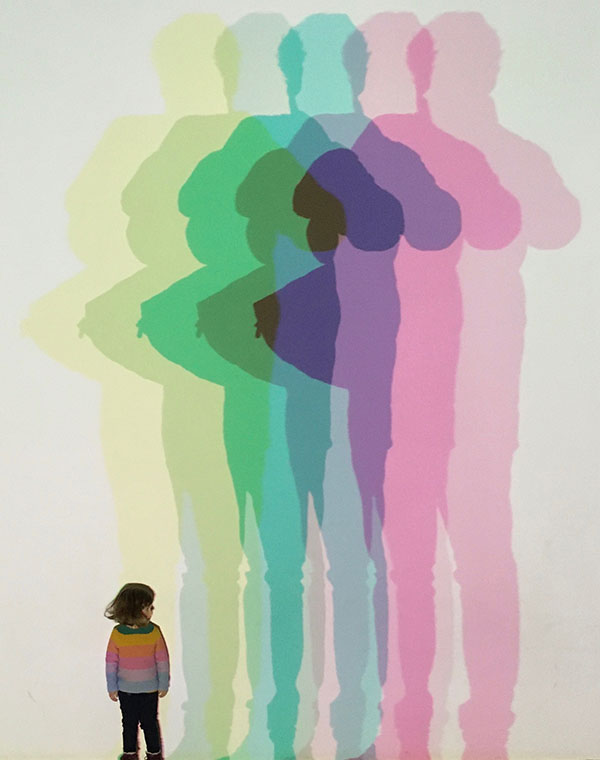
It’s a privilege to get to watch people uncover their deepest curiosities, and lean into making their most personal and creative work. There’s something very powerful about integrating all that into your professional life. And there’s a sense of joy that comes from doing the work you were made for and putting it out into the world, regardless of whether or not it’s what you’re paid for directly.
My hope is that you know that wherever you’re at right now, we all have unique, fascinating and worthwhile work within us. It’s possible to make that work, to incorporate it into your professional life and to do it without strain or hustle.
I’m inviting you to make your work. The path is long and slow and filled with recurring existential terror, but it’s worth it. Which is kind of my understanding of life in general.
INTRODUCING MAKE WORK
I still don’t know where I sit in the world. I don’t have the gall to call myself an artist, really, but I’m also clearly no longer operating according to the standard rules of the business world. And I’ve been having a lot of fun playing around and experimenting with the different forms my work can take. I currently have multiple projects on the go – some money-making, some not – including a podcast project, short film project, and writing project, as well as my usual roster of writing, consulting and event development as part of my business.
I’ve spent much of this year thinking about how I can help people walk into their real work and deepen their understanding of their process. I’ve missed meeting up with clients at live events and wanted to create something that allows us to be connected in a richer way than just staring at a screen for hours on end.
I’m excited to tell you about Make Work, a two-week immersive program that is less a course and more a curated experience-meets-workshop-meets-challenge. It will provide you with a space to explore your artistic identity, work and process alongside like-minded people who seek to do the work only they can do.
EMERGENT PHENOMENON
For Make Work I have taken the ideas and concepts I developed and taught in the past about what it means to take an artistic approach to work and gone much deeper. I’ve weaved in lessons learned from my experience and understanding of birth as the ultimate metaphor for how humans create, as well as what I’ve learned from my ongoing development of and experimentation with my own body of work.
I have plenty of theory to share with you but as the name suggests, Make Work is all about getting you actually making work and discovering by doing.
BEFORE WE BEGIN
It all begins with a parcel on your doorstep. We’ll courier a specially curated ‘making box’ to you in advance of the start of the program. I’ve been planning and preparing the materials to be included in the box since July. It includes physical prompts that you’ll be making work in response to, as well as materials to stimulate your creativity and enable you to explore your process and approach your work in new ways.
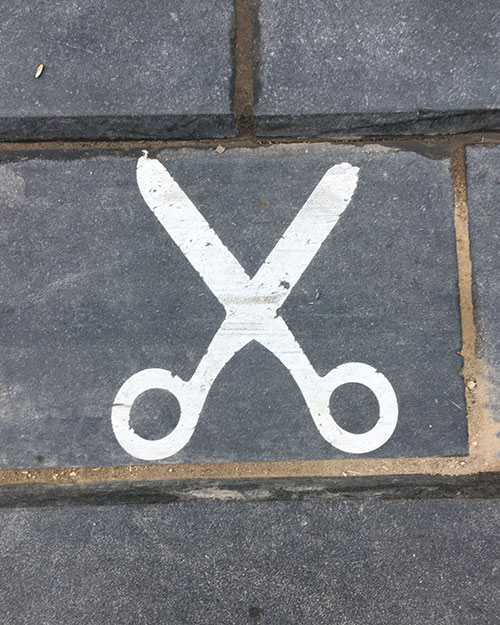
The making box is intended to engage all of your senses. During the program Zoom calls will unite us online but the Make Work box will unite us in a physical way at this time when we cannot share a geographic space.
I don’t want to tell you too much about the contents of the box because the surprise is part of the experience. But know that it includes items that have been hand-picked and processed by me, John and Pól. Joe Barwise, the Derry-born artist who does all our design work has also been hard at work creating treasures to go in the Make Work boxes. The Make Work box itself is a little standalone art project. Think of it as a care package for your creativity. I can’t wait for you to open it up and rummage through it. I hope it delights and inspires you as much as it does me.
DURING THE MAKE WORK FORTNIGHT
Make Work runs for two weeks from November 5th – 19th. During that fortnight we’ll gather regularly online as a complete group (the program is limited to 20 people) as well as in small tutorial groups. We’ll also stay in daily contact during the program via a WhatsApp group.
I’ll be teaching five classes across the two weeks. In addition to the classes, the tutorial groups are an opportunity to share the work you’re making and to discuss each other’s work. I’ll also take part and offer feedback in every tutorial group.
Making Schedule
I will guide you through the series of prompts in your Make Work box and you’ll make seven pieces of work over the course of two weeks. The work can take many different forms – writing in the form of stories, prose, and poetry, illustrations, photographs, diagrams, videos, sound works, the list goes on – and I’ll be pushing you to experiment and have as much fun with it as possible.
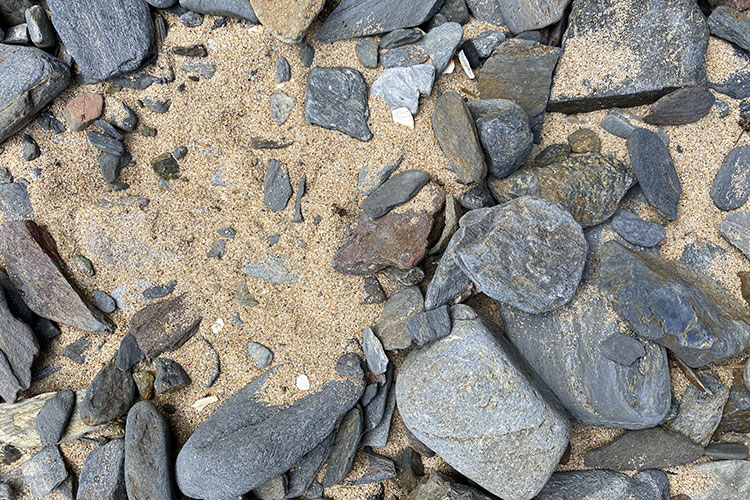
Some of the prompts will define constraints to encourage you to make something in a different form than you’re used to. For example, if you usually write, I’ll ask you to make something visual. If you usually sketch or make videos, I’ll ask you to make something text-based. There will be enough guidance and containment to make sure you can’t get lost or stuck, but my intention is to stretch you to uncover something fresh.
This is about getting you outside of your usual way of working in order to deepen your understanding of the essence of your process and artistic identity. Whether you are at the very beginning of doing your real work and don’t consider yourself an artist at all, or you have a clear sense of your artistic identity and have already produced a considerable body of work, this immersive program is designed to peel back the next layer for you.
I have come to understand that our real work is an emergent phenomenon. We can’t force it out by straining or hustling; it just doesn’t work that way. But what we can do is create the conditions under which our best work has the opportunity to emerge. Make Work is designed to immerse you in the process paradigm so you can experience and understand your creative process and self at a deeper level.
‘Making Hour’ Sessions
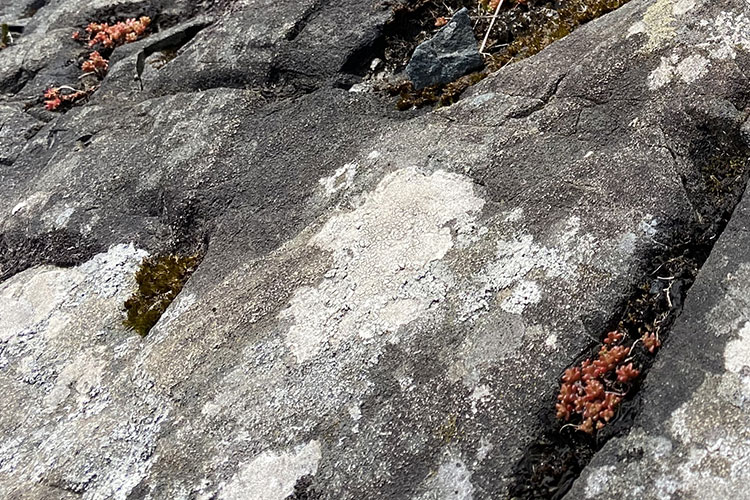
On days when we don’t have a class or tutorial groups scheduled I’ll host an optional ‘Making Hour’ session where we’ll come together on Zoom, say a quick hello and then turn our mics off and get down to whatever we’re making that day. It’s an opportunity to connect with the community and have some accountability while we all make our work. We’ll also set up a Q&A break out room during these Making Hour sessions for anyone who has questions for me. These sessions are totally optional. If you prefer to use the off days to focus on making your work by yourself, then that’s perfectly fine.
Whether you’re attending Making Hour sessions or not, I’d advise you to set aside at least an hour a day during the program to focus on making work. Some people will spend more time than that or use the weekends to immerse themselves for longer, which is also fine. Everyone’s rhythm, process and appetite will be different, but an hour a day in addition to any class or tutorials is a good place to start with your planning.
AFTER WE FINISH
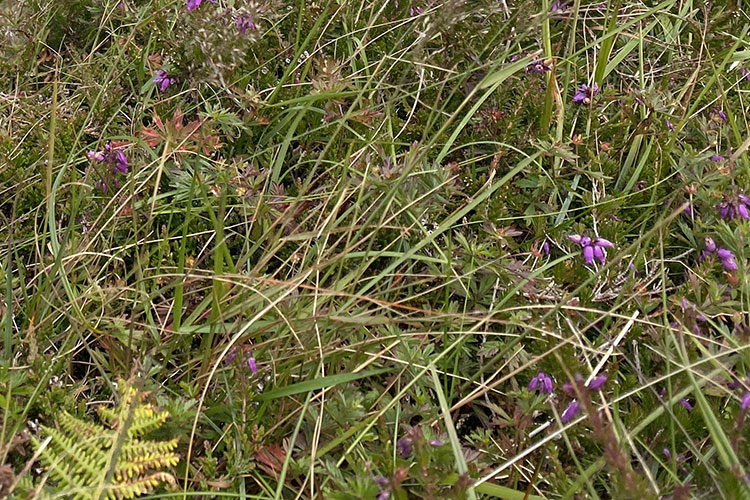
I’ll be giving you feedback on your work throughout the program in the tutorial groups and then after the end of it all, you and I will have a private twenty-minute one-to-one call to debrief, crystallise and round out your experience. After going through the generative process of making work for two weeks there will be patterns in what you’ve produced and how you’ve gone about it. Those patterns can be difficult to see yourself, so the one-to-one call is an opportunity to have me reflect back to you the patterns that are evident in your process and your real work.
These one-to-one calls will be scheduled in November and will be arranged for a time that works for you in the two or three weeks after the program finishes.
WHO IS THIS FOR?
Make Work is for people who are interested in taking an artistic approach to their work. If you are building a body of work first and foremost – or you want to – then Make Work is for you. The past few years of my work have been about understanding myself as an artist and studying how both artists and artist-type entrepreneurs work. Business and marketing education, and the world of work in general, is based on the rules of the traditional business paradigm. But when you’re primarily building a body of work rather than building a business for business’ sake, the landscape is different.
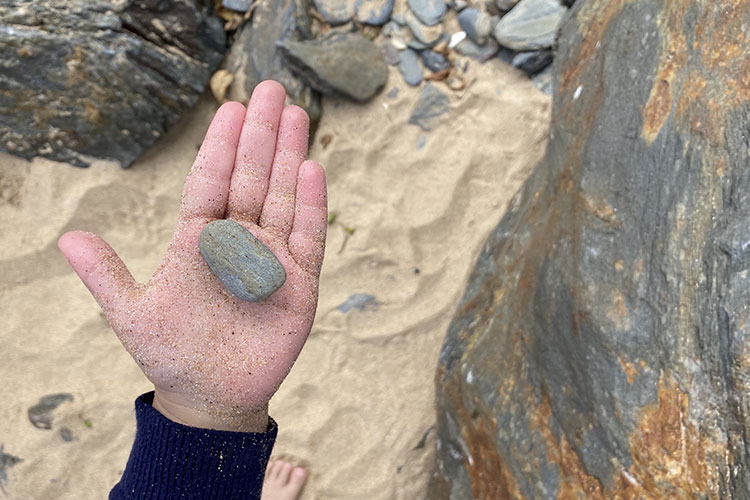
This immersive virtual program is all about understanding yourself as an artist, even if you’ve never thought of yourself in those terms before. By the end of our experience together you’ll have added a variety of new pieces to your body of work and have deepened your understanding of yourself and the work only you can do.
If you want to move away from the relentlessness of the productivity paradigm and find a more humane way to approach your professional life whilst also doing the work you were meant for, then Make Work is for you.
I should also add that this is not designed to be the kind of program you can be a passive observer of. We will come together as a community. You will talk to your fellow participants. You’ll share your work with each other and we’ll talk about it during the tutorial sessions. Classes will be recorded but the whole thing is designed for us to go through it together in real time.
QUESTIONS?
If you have any questions about the program or your specific situation and whether it’s a good fit for you right now, please feel free to email me on hello@meganmacedo.com and I’ll get back to you.
SCHEDULE
All classes and making sessions take place at 4pm UK time | 11am Eastern | 8am Pacific
All classes will be recorded and recordings will be available online the same day.
Thursday 5th November
Opening Ceremony/Introductions and Class 1: Identity and Work (2 hours)
Friday 6th November
Class 2: Forms and Media (1 hour)
Monday 9th November
Tutorial Groups (45 minutes) *time to be confirmed
Tuesday 10th November
Class 3: Themes and Curiosities (1 hour)
Wednesday 11th November
Optional Making Hour Session
Thursday 12th November
Class 4: Exploring Role and Work in the Context of Family and Cultural Forces (1 hour)
Friday 13th November
Tutorial Groups (45 minutes) *time to be confirmed
Monday 16th November
Optional Making Hour Session
Tuesday 17th November
Class 5: The Process Paradigm (1 hour)
Wednesday 18th November
Tutorial Groups (45 minutes) *time to be confirmed
Thursday 19th November
Group Wrap Up and Closing Ceremony (2 hours)
You’ll be assigned to a tutorial group after you register. For people in the UK, Europe and North America, all tutorial group sessions will take place in the morning. For people in Australia, New Zealand and similar time zones, all tutorial group sessions will take place in the evening. Exact times will be confirmed after you enrol.
If you’re in Australia, New Zealand or somewhere else that means the class timings are at unsociable hours, we will record each class and upload the recording within a few hours. I’ll also host additional drop-in sessions on Zoom during your waking hours so you can ask me questions and connect with other participants in your part of the world.
Make Work is about exploring your process in new ways, becoming more familiar with all aspects of it and your artistic self. It’s about getting to a deep, empowered trust of your own process. That’s how your richest work can be produced. I hope you’ll join me and I look forward to learning more about you and your work.
REGISTRATION
Registration is now closed.
QUESTIONS?
If you have any questions about the program and your specific needs, or if you have any problems registering, please contact us on hello@meganmacedo.com and Pol or I will get back to you.